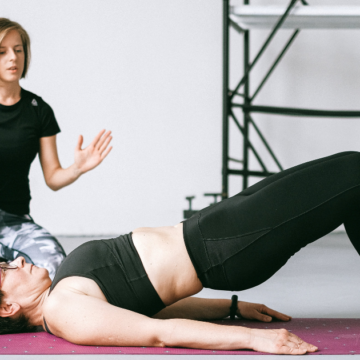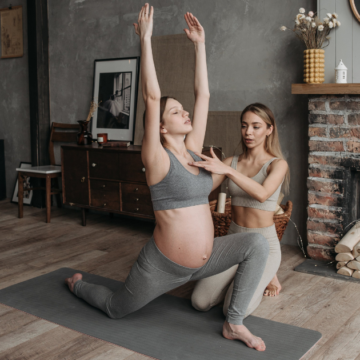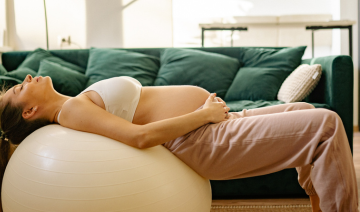Cycling is often seen as an aerobic exercise, but did you know it can also help with muscle building? While it might not build muscle mass as effectively as weight training, cycling engages various muscle groups, providing a comprehensive workout that builds strength and endurance. Let’s explore how cycling works your muscles, the benefits and limitations, and tips for maximizing your cycling workouts.

The Benefits of Cycling for Muscle Building
While cycling is primarily an aerobic activity, it has significant benefits for muscle building, especially in the lower body. The repetitive motion of pedaling works the quadriceps, hamstrings, calves, and glutes, helping to build endurance and strength. Additionally, cycling engages core muscles like the abdominals and lower back, which stabilize the body during the ride.
Understanding the Limits of Cycling for Muscle Building
Despite its benefits, there are limits to the muscle-building effects of cycling. While it can enhance strength and endurance, it may not be as effective as weight or resistance training for increasing muscle mass. Cycling mainly targets the lower body muscles, so it may not contribute significantly to upper body strength. To achieve a balanced workout, consider incorporating other forms of exercise that target different muscle groups.

Major Muscle Groups Worked During Cycling
Cycling involves several key muscle groups, each working at different points in the pedal stroke:
- Quadriceps: Engaged during the downward pedal motion, extending the knee.
- Hamstrings and Glutes: Worked during the upward pedal motion, flexing the knee and extending the hip.
- Calves: Active throughout the pedal stroke, aiding in pointing the foot downward.
- Core Muscles: Stabilize the body during the entire cycling motion.
Differences Between Outdoor and Indoor Cycling
There are subtle differences in muscle engagement between outdoor and indoor cycling. Outdoor cycling often requires more stabilization due to uneven terrain, working the stabilizing muscles more. Indoor cycling, with consistent resistance, may emphasize the lower body muscles more. Both forms, however, primarily engage the same major muscle groups. You can also use a recumbent bicycle for reduced pressure on the back and joints. Feel free to read our physiotherapists blog on “Health Benefits of Recumbent Bicycles“.

Impact of Pedal Types on Muscle Engagement
The type of pedal used can also influence muscle engagement:
- Clip-in Cleats: These can help engage the hamstrings and glutes more during the upward pedal motion.
- Standard Pedals or Pedals with Cages: These may rely more on the quadriceps for power.
Cross-Training for Balanced Muscle Development
While cycling is excellent for the lower body, cross-training is crucial for balanced muscle development and injury prevention. Activities like weight training, resistance training, and yoga can strengthen muscles not actively worked during cycling, such as the upper body and core. Incorporating stretching and foam rolling into your routine can also help prevent injury and improve recovery time.
Key Muscles Used in Cycling
Understanding the primary muscles used in cycling helps in targeting strength training and improving performance:
- Gluteus Maximus
- Semimembranosus (Hamstring)
- Biceps Femoris (Hamstring)
- Vastus Medialis (Quadriceps)
- Rectus Femoris (Quadriceps)
- Vastus Lateralis (Quadriceps)
- Gastrocnemius Medialis (Calves)
- Gastrocnemius Lateralis (Calves)
- Soleus (Calves)
- Tibialis Interior
These muscles, often referred to as primary movers, are crucial for generating power and speed in cycling. They work in a coordinated manner to produce efficient pedaling motion.

The Power of the Pedal Stroke
Most of the power in a pedal stroke comes between the 12 o’clock and 5 o’clock positions. During this phase, hip flexion, along with hip and knee extension, activates the glutes, quadriceps, hamstrings, and calves. The upward phase, from 6 o’clock to 12 o’clock, involves knee flexion, aided by the hamstrings and calves, helping return the pedal to the top.
Strength Training for Cycling Muscles
To build strength for cycling, focus on exercises that target the legs and core:
- Squats: Engage the glutes, quadriceps, hamstrings, and core, mirroring the power phase of the pedal stroke.
- Single Leg Deadlifts: Target the hamstrings, hips, and lower back, correcting muscle imbalances.
- Heel Raises: Strengthen the soleus and gastrocnemius muscles.
On-the-Bike Strength Training
Strength training on the bike includes seated and standing muscle force efforts, especially on hill climbs. These efforts, done with a slower cadence and harder gearing, build strength and endurance in the legs. Space out these force effort days to allow for recovery and prevent injury.

Increasing Leg Speed
Fast cadence, seated efforts target hip flexion and the rectus femoris, enhancing pedaling efficiency. These efforts build aerobic strength in both the non-power and power phases of the pedal stroke, crucial for races and high-performance cycling.
Don’t Forget to Stretch
Regular stretching is vital to keep primary muscles flexible and prevent tightness. Simple stretches, like toe touches for the hamstrings and heel pulls for the quadriceps and hip flexors, can maintain muscle health and prevent injuries.
In conclusion, while cycling is an excellent way to build lower body strength and endurance, incorporating cross-training and strength exercises can enhance overall performance and prevent sport injuries. By understanding how different muscles work during cycling and integrating balanced workouts, you can achieve optimal fitness and cycling efficiency.





